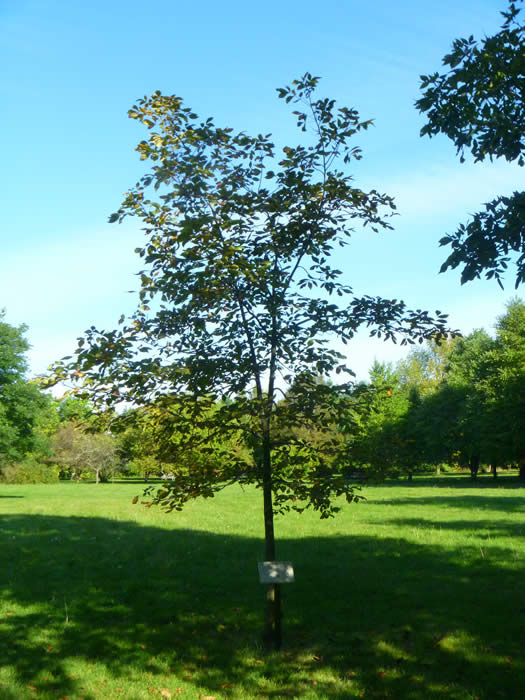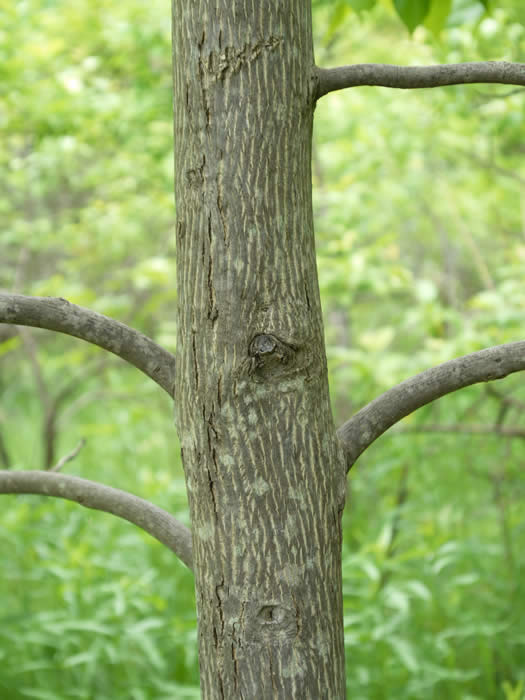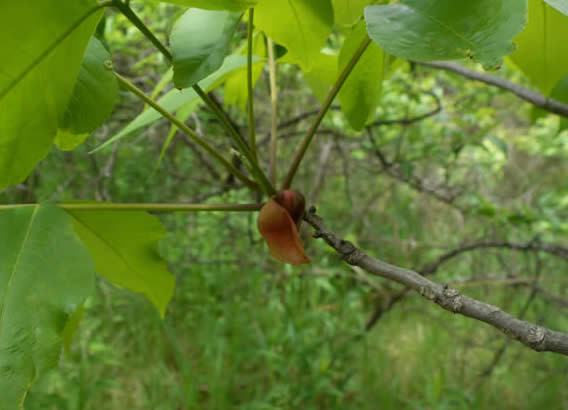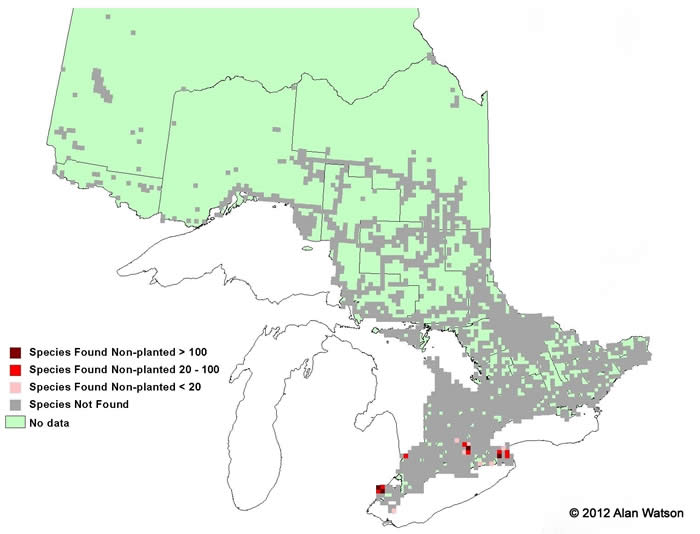pignut hickory
pignut hickory - Carya glabra
This hickory species is rare in Ontario, only occurring in a few pockets in the extreme southern parts of the province. The pignut hickory prefers more open, well-drained areas; but similar to the bitternut hickory, the fruits are largely unpalatable, although they will still be eaten by some wild animals as a last resort. This species has very tough, durable wood that is used to make tool handles and sports equipment such as tennis rackets. This hickory also makes an excellent fuel source, as it burns intensely with little ash, so it is popular for home-heating uses.

The pignut hickory is a relatively small tree, only growing about 20 m in height and 50 cm in diameter, but it can live for up to 200 years. Many of this tree’s branches bend downward, which give it a droopy look. Photo by Chris Earley.

The leaves of the pignut hickory are compound and pinnately divided, usually with 5-7 leaflets. They measure 15-25 cm in length and are finely toothed. Photo by Jesse Wolf.

Bark of the pignut hickory is grey and often scaly with many intersecting ridges. Photo by Jesse Wolf.

The nuts of this species are usually dark brown when mature in the fall, and are protected by 4 husks that will split apart when opened. Photo by Jesse Wolf.

Ontario Tree Atlas map of non-planted Pignut Hickory. 1995-1999.
References
Farrar, J.L.. 1995. Trees in Canada. Fitzhenry & Whiteside Ltd. Toronto. ON. 504 pp.
Kershaw, L. 2001. Trees in Ontario: Including tall shrubs. Lone Pine Publishing. Edmonton. AB. 240 pp
Muma, W. 2011. Ontario Trees and Shrubs. [Online] Available: www.ontariotrees.com
OMNR, 2011. Ontario Ministry of Natural Resources: Ontario Tree Atlas. [Online] Available: http://www.mnr.gov.on.ca/en/Business/ClimateChange/2ColumnSubPage/267027.html
OMNR, 2008. Ontario’s Biodiversity: Species at Risk.